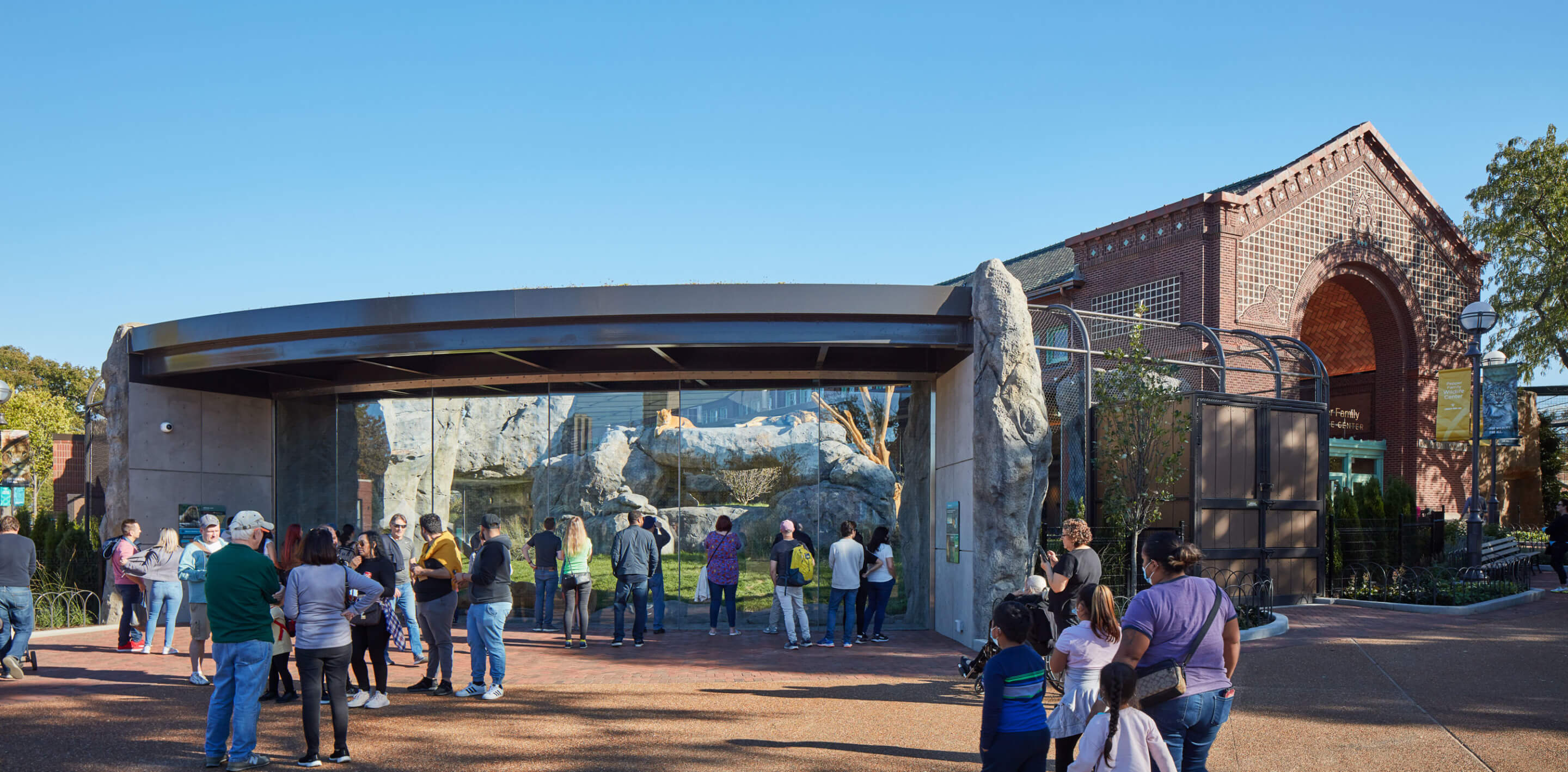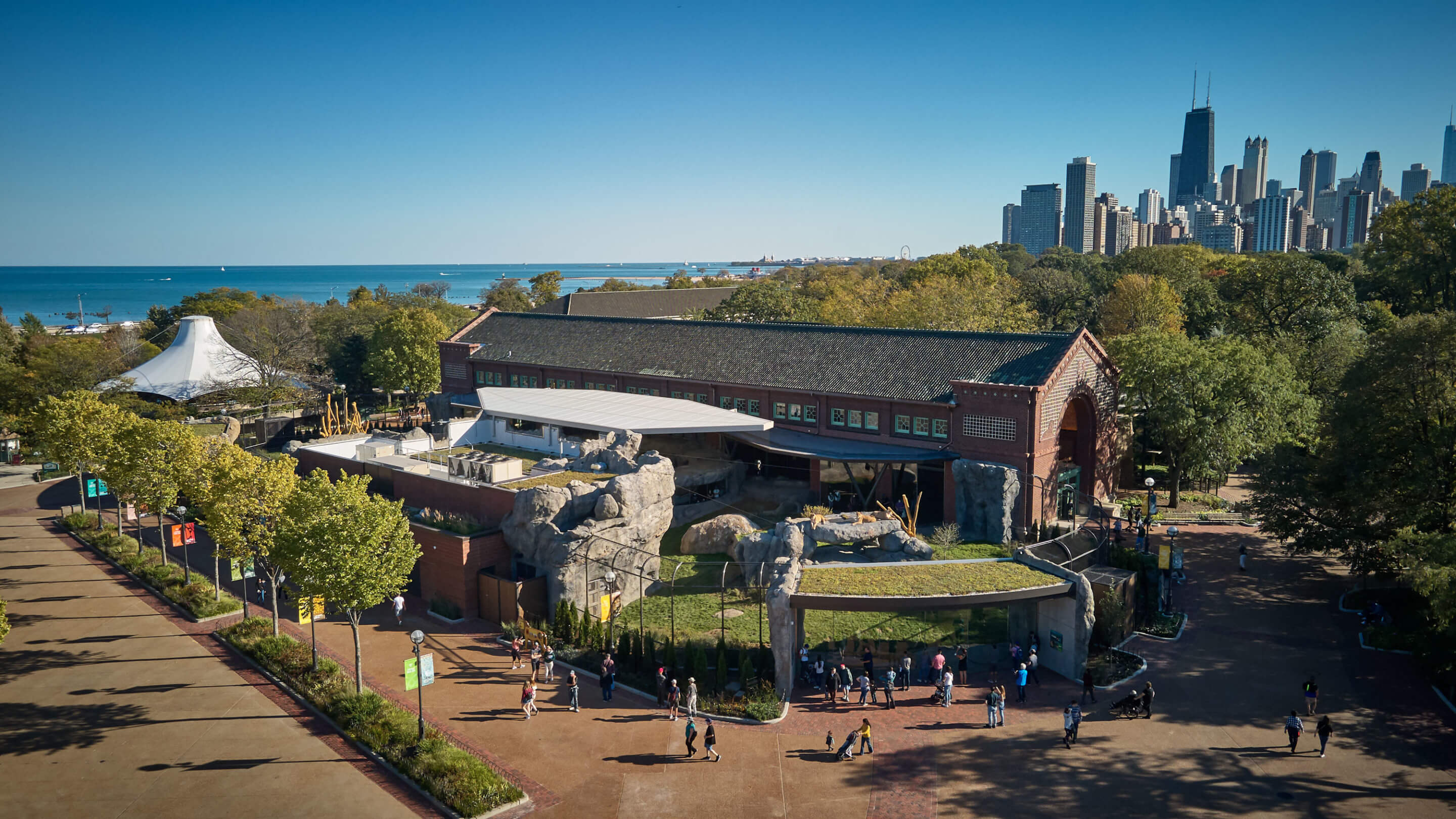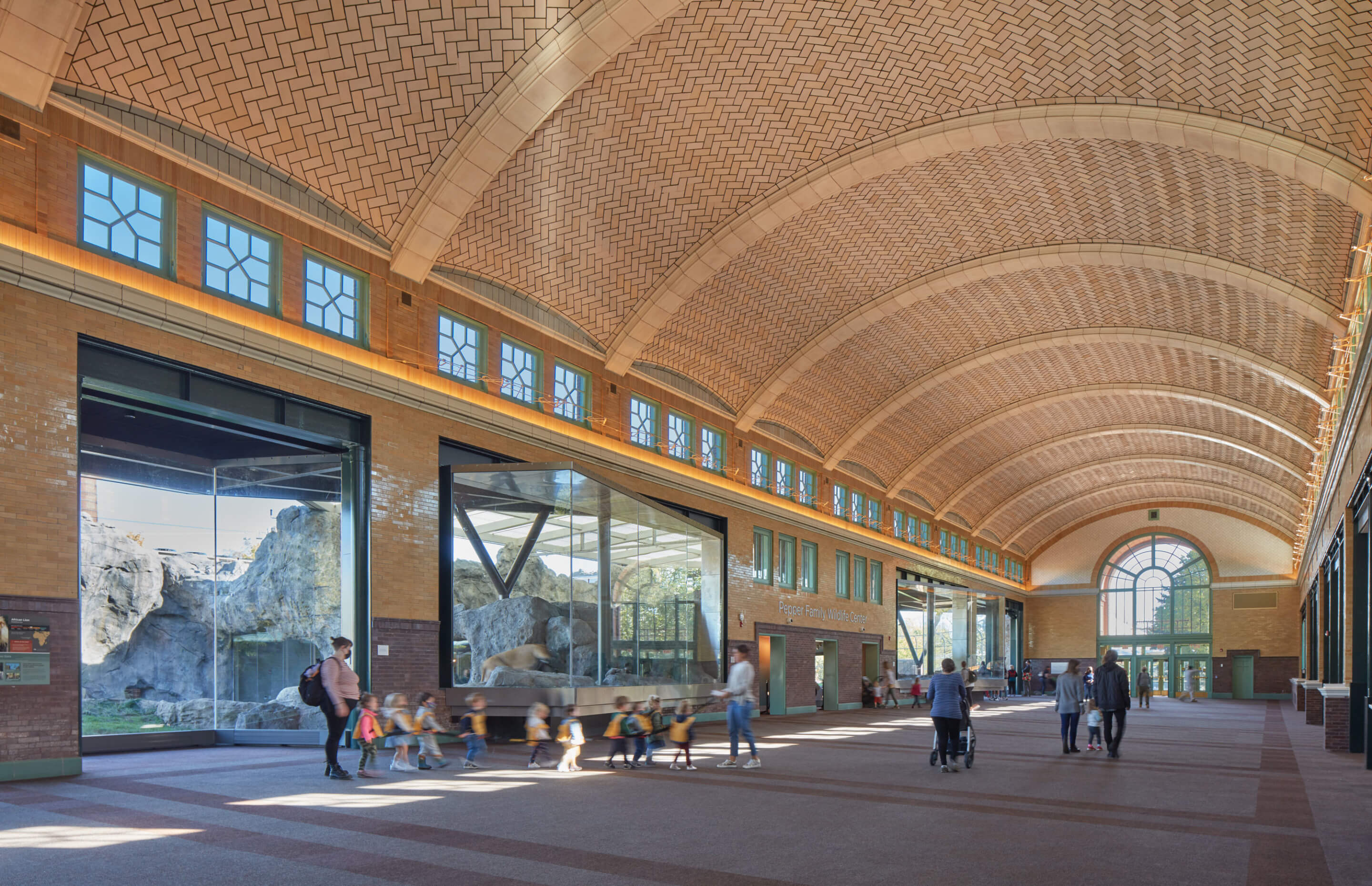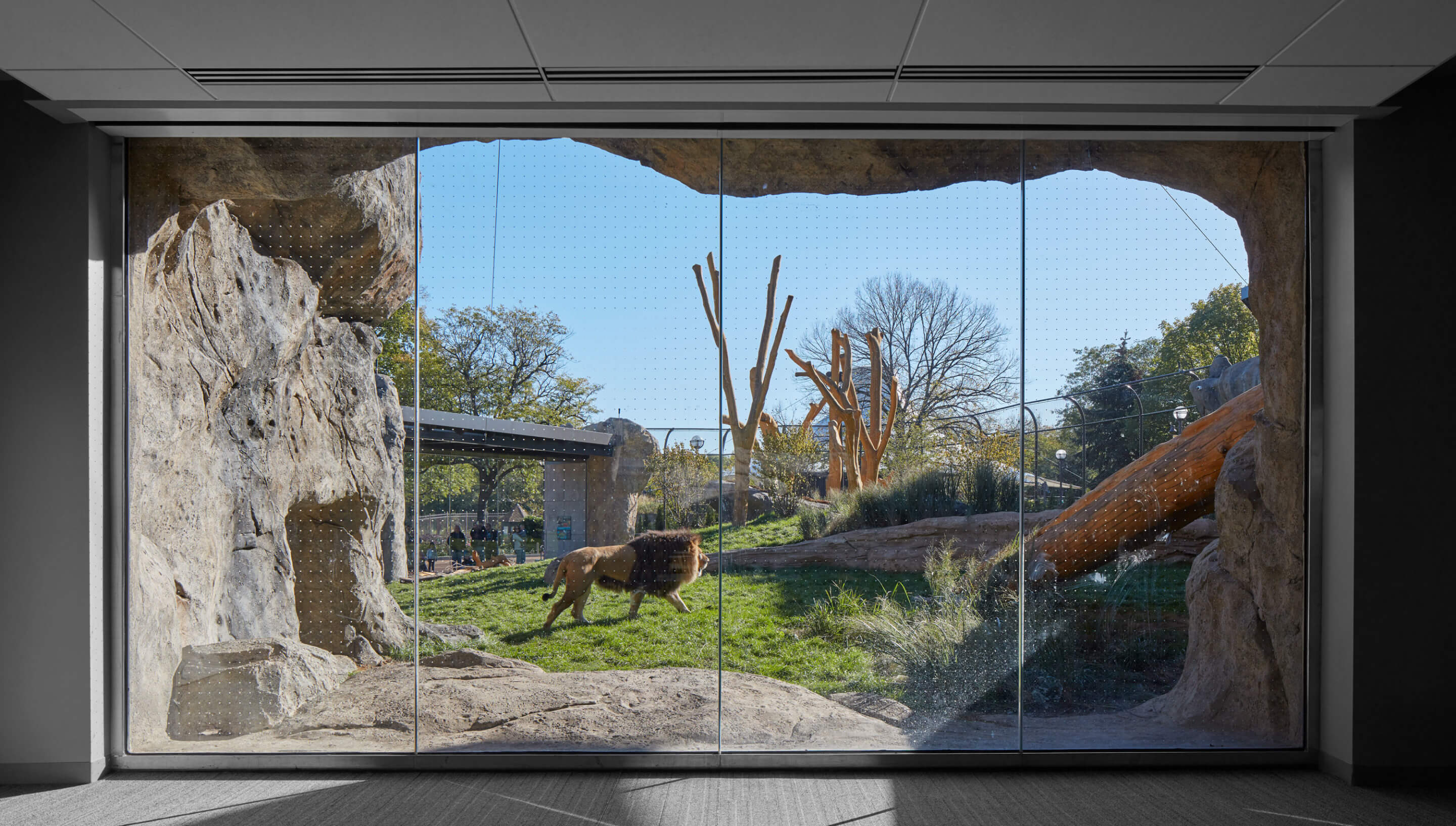- Architect
Goettsch Partners - Exhibition Design
PJA
- Location
Chicago - Completion Date
October 2021 - Glass Design
Rice Engineering - Glass Supplier
Agnora Architectural Glass North America - PVB glass interlayer
Trosifol Ultra Clear PVB - Glass-to-Glass Sealant
Pecore 895 NST-Clear - General Contractor
Pepper Construction - Glazing Contractor
SG Metal & Glass - Digital Printing in Glass
Dip-Tech - Construction
Pepper Construction
Combining historic preservation, zoo design, and the technical expertise that complex facades demand, the Pepper Family Wildlife Center at the Lincoln Park Zoo in Chicago provides an enhanced visitor experience while providing a comfortable, state-of-the-art home for the zoo’s resident lions.
Designed by Chicago-based Goettsch Partners in collaboration with zoo design specialists PJA, the team was tasked with doubling the size of the zoo’s lion habitat while accounting for both lion strikes and animal comfort in the expanded habitat in the 110-year-old building. The renovation also needed to meet standards set by Commission on Chicago Landmarks for work on historic properties.
“[This] required a careful balance of restoring its defining historic features and designing new, distinctively modern elements,” said Andrew Fox, an associate at Goettsch Partners.

Covering 54,000 square feet, the project includes outdoor viewing shelters, new animal care facilities, meeting and event spaces, as well as a Lion Loop that permits visitors to view lions from the middle of the habitat. The new circulation enables visitors to experience the lions in a more personal way.
The lion house was landmarked in 2005, requiring any future work to be completed within the Chicago Landmark guidelines. However, the guidelines allow for some flexibility, so the design team prioritized areas in which they could operate with more freedom. The architects opened up the masonry of the north and south walls, and on the east and west facades, they renovated the roof and clerestories over the building’s entrances. The architects had to replace the stairs on the faces with accessible entryways, but ran into challenges with Chicago’s Landmarks Commission as this meant that these faces would be significantly altered. The resulting design provided a “historic sense of entry” according to Fox, and met improved accessibility needs.

Further restoration work focused on brick, stone, and terra-cotta elements of the house. Workers replaced terra-cotta soffits, while the copper gutters, the clay-tiled roof, and clerestory windows all required repair work. The windows, formerly operable, were fixed as improved behind-the-scenes heating and cooling systems were installed so as to not further disturb the hall’s historic character.

The new habitat area is more transparent than the previous one, with large stretches of glass enclosures allowing visitors clearer and closer views of the lions.
Goettsch Partners Principal Patrick Loughran describes the glass enclosures on the building’s north side as “innies and outies.” The ‘innies’—so called because they welcome visitors in—were formed by half-inch triple-laminated glass that spanned up to 7 by 14 feet and weighed tons. Pepper Construction had to use a 40-ton hydraulic crane and a pneumatic suction-boom manipulator to install the panels. The ‘outies’ cantilever over the floor of the pre-existing hall. Workers had to shore the floor—original to the 1912 building—from below due to the weight of the glass panels.
The glass surrounding the enclosures was constructed with 1 ½-inch-thick laminated glass panels placed into a stainless steel perimeter frame. The glass—manufactured by Agnora Architectural Glass North America—was made by combining three half-inch low-iron lites of glass with a .09-inch Trosiful ultra-clear PVB interlayer.
“Working with zoo staff, a horizontal load of 2,280 pounds was determined as the equivalent force to a 500-pound lion impacting the enclosure at 25 miles per hour with a quarter-second time step,” said Loughran. They also set the maximum deflection at 3 inches.

Rice Engineering completed the glass design, with their modeling of a concentrated load allowing for the outboard lite to be broken. The design team raised concerns over roller wave distortion and spontaneous breakage from nickel sulfide contaminates because the glass needed to be tempered to be stronger. Agnora measured glass heat-treatment distortion, confirming the glass’s flatness, and tested heat-soaking verification, minimizing the likelihood of nickel sulfide contaminates.
The final consideration for glass design came at the request of the zoo officials who raised concerns over bird strikes. Trees were visible on both sides of the enclosures, making them particularly prone to bird strikes, according to Loughran. After researching numerous laminated-glass products, the design team found limited options given the size of the glass panels they were working with. A surface-applied pattern of white dots was digitally printed on the glass, with 3/16-inch diameter dots spaced two-by-two inches across the panels. The Dip-Tech inks printed on the glass have a high environmental resistance, allowing them to be printed on the exterior of the glass.





